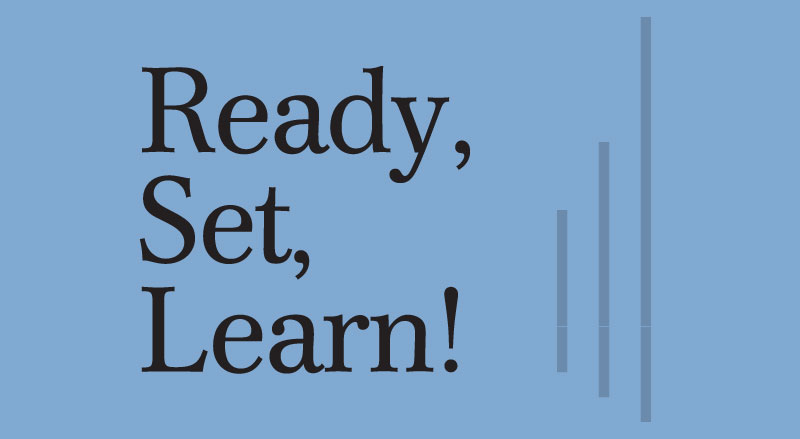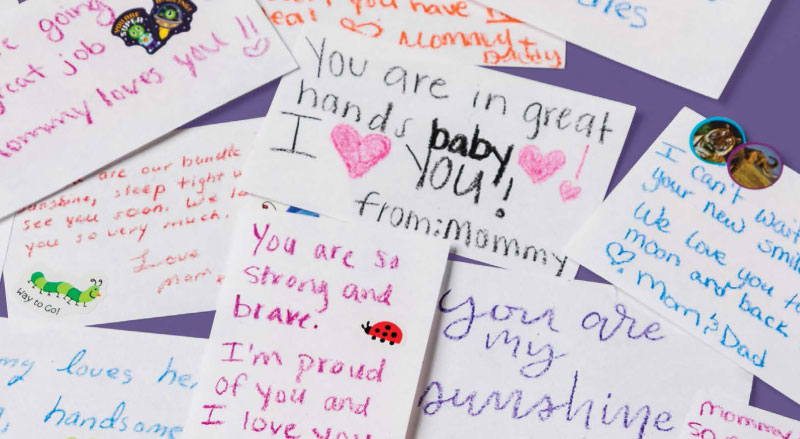For 8-year-old Talia, “see” is for cheetah – as in the cheetah print glasses she loves to wear.
“It’s all about the fashion. Talia’s into fashion,” says her mother, Tanasha Dollison.
For Talia and hundreds of other underserved Omaha students, “see” is also for classroom—the place where they can now perform more effectively, courtesy of newly corrected vision.
And, for the community partners dedicated to making this life-changing eye care possible, “see” is for collaboration — the necessary fuel for a brand-new mode of eye care outreach that will serve thousands of Omaha Public School students each year.
“For me, this Visionmobile is not just a simple vehicle to help people with vision; it’s far greater than that. It’s actually giving people hope, letting them know there are people in the community who care,” says Donny Suh, M.D., division chief of Pediatric Ophthalmology at Children’s Nebraska.
The Visionmobile is eye care for the underserved on wheels – a 33-foot Winnebago, retrofitted with state-of-the-art vision equipment, two exam lanes and a small waiting area, that travels within the Omaha Public School district.
“It’s a novel and innovative concept with top-of-the-line technology.”
— Donny Suh, M.D., Division Chief of Pediatric Ophthalmology
It is also a rolling demonstration of the power of partnership — Children’s teaming up with Building Healthy Futures and dozens of community care partners to make it a reality.
“Everything lined up so this could happen without major obstacles,” says Deb Tomek, M.D., associate medical director for Children’s Center for the Child and Community. She also serves as medical advisor for Building Healthy Futures, a local nonprofit that coordinates collaboration to improve the health of the community’s underserved children, investigate solutions, convene thought partners and drive the conversation.
“We were hearing from schools that vision was a gap in care that was not being addressed in Omaha,” says Jeanee Weiss, CEO of Building Healthy Futures. “The size of the gap was too big for one agency to address. It took multiple partners coming to the table.”
Dr. Tomek adds, “If you don’t have at least one coordinating group for these bigger projects, they fall apart.”
Research underscores why this one needed to hold together and move forward. Failure to address the vision gap in Omaha means potential failure in the classroom:
- 80% of learning is dependent upon a child’s ability to see.
- 75% of the school day is spent in visual activities.
- 25% of children nationwide have undiagnosed eye problems that can interfere with learning and lead to academic and/or behavioral problems. (The number in Omaha, according to data collected by Building Healthy Futures, is closer to 32%.)
“When vision is impacted, it directly affects a student’s ability to engage in the classroom and feel like they can learn and be successful,” Weiss says. “When vision issues do arise, it’s really important that they’re addressed early because once students get that sense that they Can’t be successful, it’s really hard to overcome.”
The Visionmobile, which emerged from Building Healthy Futures’ Child Vision Collaborative, makes its debut this fall, with a formal ribbon-cutting planned for the start of the 2018-2019 school year. The outfitted RV’s destination is “wherever the need is greatest,” primarily targeting schools with poverty rates of 75% or greater, students pre-K to high school.
“We’re helping underserved children have better vision for a better life so they can grow up, turn around and help people in the community,” says Dr. Suh. “This is in complete alignment with our mission at Children’s to improve the life of every child.”
The Visionmobile is staffed by Children’s with an eye doctor, a coordinator, an optician and an op-tech (one of whom also doubles as the driver). Services provided include basic eye exams, refraction for glasses, basic eye disease treatment and possible referrals for advanced care. The goal is to build up to treating 6,000 students per year.
Here’s how the Visionmobile process works: Students first undergo an initial vision screening at their school. Those screenings are conducted in collaboration with student-volunteers from all five of the area’s nursing colleges. Children who fail the screening — and meet low income requirements — have the opportunity, with parent consent, to be examined more fully in the Visionmobile, which will be brought to their school at a later date. From there, Weiss says she expects about 400 students a year to be referred on for more advanced care. Families with private insurance or Medicaid will be billed for their Visionmobile visit, any additional follow-up, and if necessary, for glasses. But, no child will be turned away because of an inability to pay.
With so many underserved children in Omaha, Weiss says exploring different care delivery models, like the Visionmobile, is crucial. The lead-up to the fall 2018 launch involved a lot of research, fact-finding trips to other states and a two-year pilot vision screening program to identify best practices for screening large populations of students–all of this under the umbrella of Building Health Future’s Child Vision Collaborative.
“That collaborative has been a driving force throughout,” says Dr. Tomek.
Starting in 2015, representatives from more than 20 partner agencies were given a charge of creating an entire continuum of care for vision — from vision screening to correction and to more advanced medical needs. Drs. Tomek and Suh were involved from the beginning. For Dr. Suh, serving the underserved is an issue that resonates in a very personal way.
“When I first moved to Omaha almost four years ago, I was amazed by the unmet needs in the public school system,” he says. “Having vision issues myself as a child and not being able to afford the glasses I needed was a driving force for me.”
The Collaborative began piloting vision screenings in 10 Omaha Public schools in 2016. That grew to 13 schools in 2017. Over the course of the two years, a total of 16,208 students were screened and 5,972 students were referred for further exams. More than 1,000 students received free prescription eyeglasses from the 2016 pilot screenings and exams alone. That includes Talia, the third grader with those cool cheetah print glasses (and an affinity for reading and math).
“When I didn’t have glasses, I couldn’t see stuff far away. It was very blurry,” she says.
Her mother, Tanasha Dollison, appreciates the outreach from both a financial and convenience perspective: “As a single mother, an extra pair of glasses is a big help. Plus, I don’t have to take off of work and try to get her in for an appointment. Having them right there on-site and on the spot is awesome. That’s an A+ for me.”
Shannon Cunningham, R.N., B.S.N., school nurse at Skinner Magnet Center, sees the impact of the vision-focused outreach firsthand: “I get feedback from teachers, ‘Hey, are we going to be a part of the vision program this year? I have a student who needs an exam.’ This has made such a big difference in the classroom. Students can see; they can read in class.”
Weiss recalls the story of a third grader who received his first pair of glasses during the pilot phase: “They were walking him out to the bus to take him to school. He looked around and said, ‘This is the best day of my life.’”
Weiss, Dr. Suh and Dr. Tomek agree — the effectiveness of the pilot screening phase and the ensuing launch of the Visionmobile would not have happened without multiple agencies rolling up their sleeves and pitching in.
Dr. Suh says: “We have 52,000 kids in OPS. Without teamwork, it would not have been possible for us to take care of such a large population. … The community came together to make this work—and it’s going to be for the community.”
Building Healthy Futures, which receives the majority of its funding from Nebraska Medicine, is providing the funding for the Visionmobile and the first year of operating expense. Children’s will be responsible for the long-term sustainability after that. Weiss says she hopes this is only the ‘first’ Visionmobile: “To address the needs in OPS alone, we’re going to need two units. Then, you start thinking about the broader community and the rest of the state, especially the gaps that exist in rural Nebraska. I think this is the first of many child vision initiatives to come — but they won’t all necessarily be mobile.”
A collaborative advance in eye care for the underserved — with plenty of potential for even more impact.
“Working with kids through the Visionmobile, we’re going to be able to identify other needs, whether it’s kids with asthma, severe allergies or hearing issues. This is going to become a path to help those kids who are in need,” says Dr. Suh. “I could easily see this expanding once we have the support we need.”
For those partners so dedicated to the collaborative success of the Visionmobile project, “see” is for continued – as in ‘to be’ …



